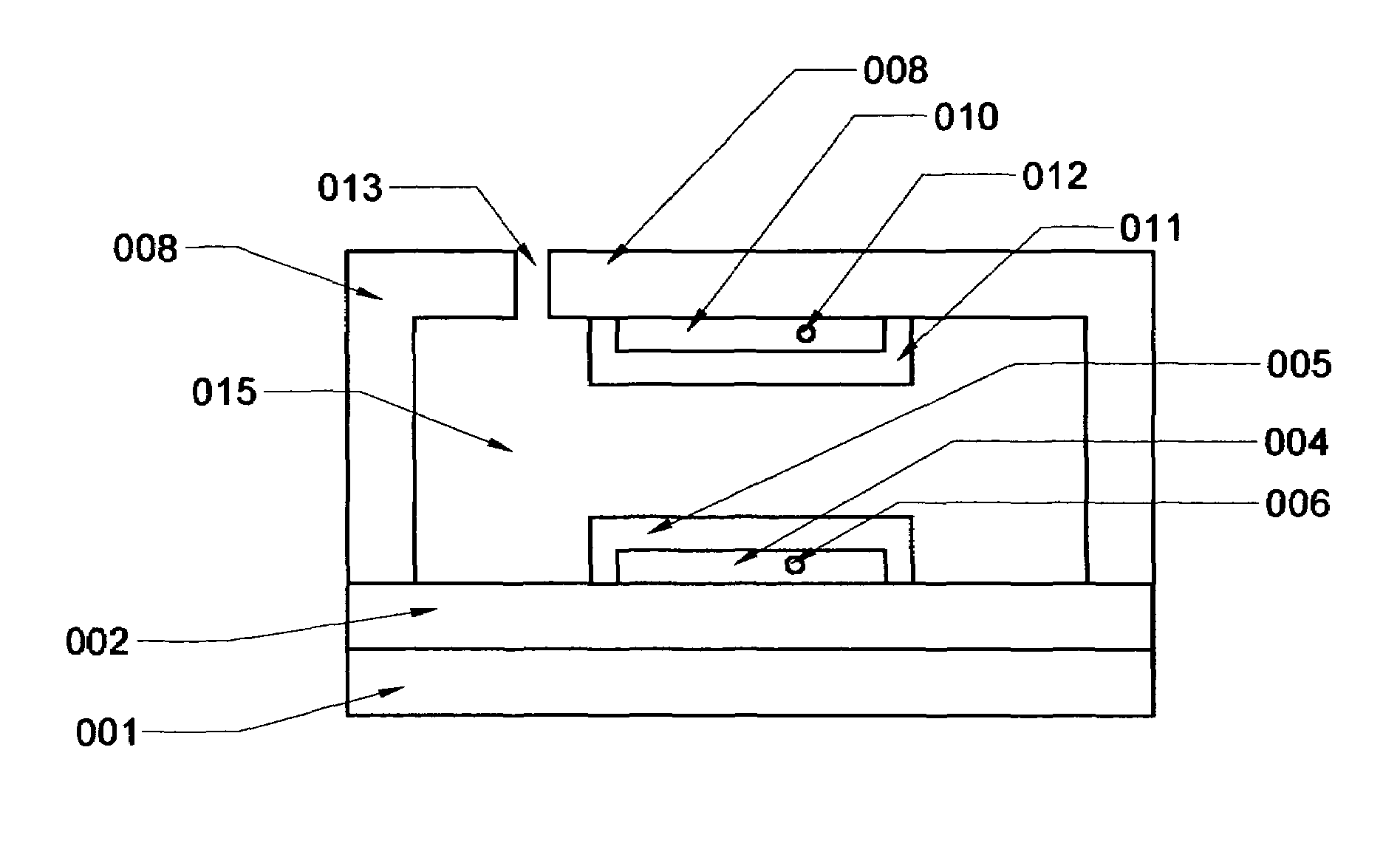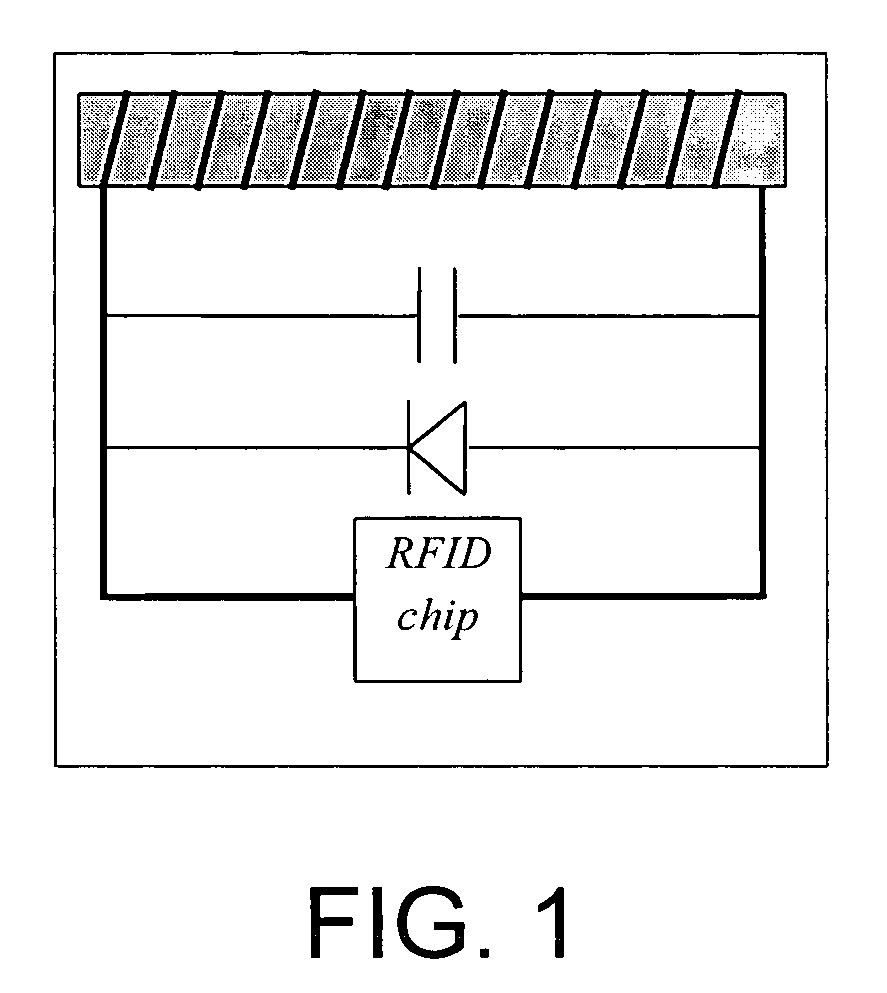Parallel-plate capacitive element for monitoring environmental parameters in concrete
- Summary
- Abstract
- Description
- Claims
- Application Information
AI Technical Summary
Benefits of technology
Problems solved by technology
Method used
Image
Examples
example 1
6.1 Example 1
[0559]FIG. 5 is a schematic diagram of the top view of an embodiment of a sensor of the invention comprising a MEMS device 500. The MEMS device forms the capacitive element of an L-R-C network (not shown). Two sets of interdigitated capacitive elements, 502 and 504, are formed within the MEMS device 500 with the first of these, 502, fixed within the device and the second, 504, movably mounted on spring elements 508. The active material 506 (e.g., hydrogel) is disposed within and between the spring elements 508. This active material is chosen so that it responds to a measurand by swelling. As swelling occurs, capacitive element 504 moves relative to the fixed capacitive element 502, thereby changing the capacitance of the device. An important feature of this embodiment is the degree to which the active material 506 is constrained. The ratio of the surface bounded by the body of the MEMS device 500, the spring elements 508 and the movable capacitive element 504 to the fre...
example 2
6.2 Example 2
Design and Fabrication of a MEMS-Based Parallel-Plate Capacitive Element
[0563]6.2.1 Introduction
[0564]In this example, microelectromechanical systems (MEMS) technology is used in the design and fabrication of a silicon parallel-plate capacitive element that can be used as the capacitive element in certain MEMS-based embodiments of the concrete sensor of the invention. MEMS-based concrete sensors can be added into a concrete mix before the mix is placed and will record the characteristics of that mix to determine whether there are problems with alkalinity, moisture content, or other factors. After being embedded within a concrete structure, the MEMS-based sensor will continue to transmit data about the structure's maintenance requirements. The MEMS-based sensor can also withstand the weight of concrete being placed on top of it.
[0565]6.2.2 MEMS Capacitor Design
[0566]The MEMS-based parallel-plate capacitive element (“MEMS capacitor”) is approximately 3 mm2, which is fairl...
PUM
 Login to View More
Login to View More Abstract
Description
Claims
Application Information
 Login to View More
Login to View More - R&D
- Intellectual Property
- Life Sciences
- Materials
- Tech Scout
- Unparalleled Data Quality
- Higher Quality Content
- 60% Fewer Hallucinations
Browse by: Latest US Patents, China's latest patents, Technical Efficacy Thesaurus, Application Domain, Technology Topic, Popular Technical Reports.
© 2025 PatSnap. All rights reserved.Legal|Privacy policy|Modern Slavery Act Transparency Statement|Sitemap|About US| Contact US: help@patsnap.com



